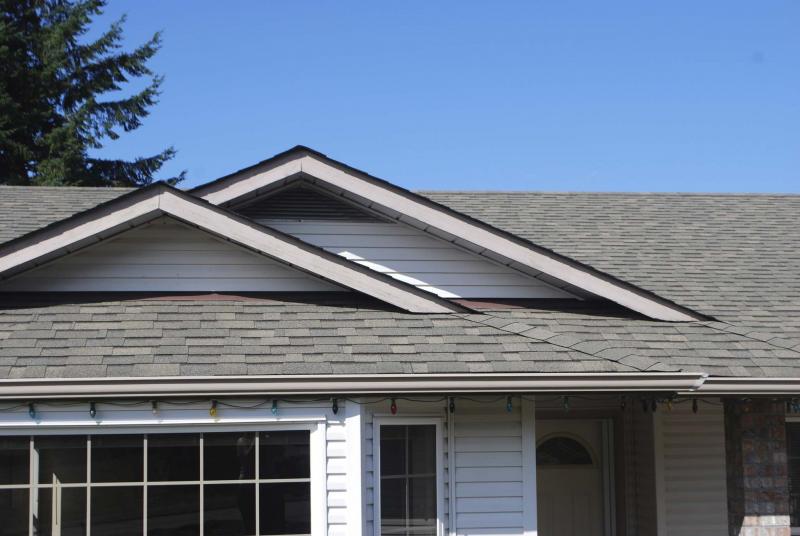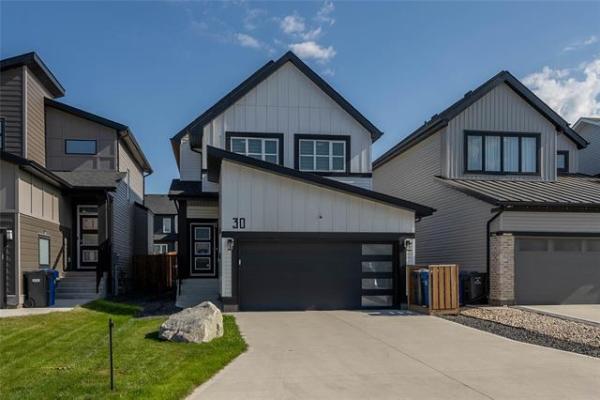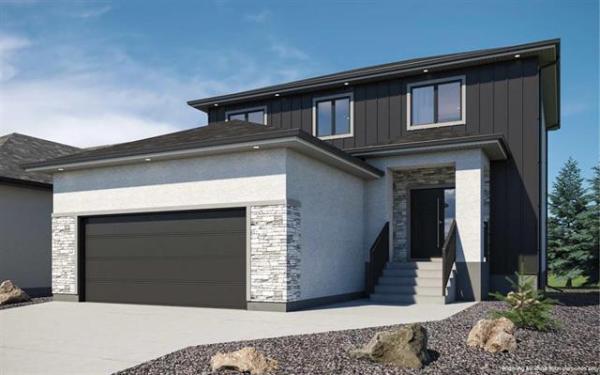QUESTION: I bought my mother-in-law’s home one year ago and I am now experiencing leaks. The shingles were replaced about 10 years ago. When I moved in, there were small bulges on the drywall near the peak of the vaulted ceilings, but no water stains were evident. I was confident after looking on the roof with a home inspector that if leaks caused the slight bulge it wasn’t a factor since the roofing had been replaced not that long ago.
In the past month, things changed and water is entering my house. I suspected the ridge cap, so I walked the roof and again, but there were no obvious signs that I could verify. I did notice the vented ridge cap shingles were slightly concave. There is a very low slope to the roof on my house. All the cap shingles were secure, but some could be lifted slightly. So I tarred underneath each cap shingle and laid a tar bead on top side of each cap shingle, in the bottom of concave area.
To my dismay, the leaks continued into the house during the next rainfall. I decided to remove the damaged drywall bulge, with the intent of opening up the ceiling so I could verify the actual location of the leak from inside. I removed a small area of drywall and mold was evident on the backside. I then cut into a second layer of soft drywall and increased darker mould was evident. The insulation was damp and the paper side of the insulation had spotted mould, as well. I then suited up for safety and sealed off the bedroom and removed the entire wet and mouldy area near the peak of the ceiling in the entire length of the master bedroom.
I verified water stains on the main beam and many of the 2 x 10 rafters. With the rain we had after I opened up the ceiling, I validated everything and put 13 Tupperware containers on top of the ridge beam to catch the leaks coming in from the faulty vented ridge cap. I suspect this vented ridge cap has been leaking since Day 1, until finally the bulge in the drywall showed up. The removal of the ceiling was only done in one room and I’m terrified that I may have to continue to remove mouldy drywall and insulation from the rest of the house.
What recourse or action do I have with the roofing company, if any? Replacing my vented ridge cap would be great — a small easy job — but what about the extensive damage, time and cost to repair the inside of my home?
Thanks for your help.
— Norman Cetkovski
ANSWER: Problems with poor workmanship and materials on home renovations or upgrades is definitely on the upswing, but often these do not pose as big an issue as with your leaking roof vent. Other than approaching the contractor, or the manufacturer of the possibly defective ridge vent, little recourse may be possible without the courts becoming involved.
Every year, I receive dozens of phone calls and emails from homeowners that have fallen prey to poor quality contractors who have numerous complaints. These may range from lousy renovations to major moisture issues, like yours. While I may be able to offer some advice and information, not much can be done to fix the issue if the contractors are unwilling to admit and fix their mistakes.
A good, reputable contractor will admit fault and repair the issue, often at their own expense. Less reputable ones may shift the blame or deny anything they did was wrong.
Unfortunately, there is little in the way of recourse if they have already been paid in full for the work. Especially in a case like yours, where the work was done for another person, you may not get any satisfaction when contacting the roofer.
The only possible course of action may be to determine the manufacturer of the ridge vent and contact them to see if they have had issues with their product, or search online to see if there are any class actions against the company.
Similar to home inspectors, which I have written about many times, there is no regulation or licensing of residential contractors. Roofers, as well as several other types of renovation contractors, do not require any trade certification to do their job. Therefore, anyone can replace shingles — and roof vents — without much scrutiny.
For that reason, obtaining references from several satisfied customers, friends, neighbours or others who have been happy with a contractor’s workmanship several years after completion is your best bet. There are also numerous websites where various contractors are rated by average consumers, which can be helpful, too.
Other than these, and voluntary membership in the Manitoba Roofing Contractors Association, there may be little the previous homeowner could have done to vet the particular roofer in question. Perhaps, it is time some regulations are put in place by government bodies to ensure contractors are licensed and providing proper services to their customers.
Unfortunately, getting a contractor to admit fault for poor workmanship on your home after the fact, especially on a job done for a different customer, may be impossible.
Replacing the poorly designed and installed ridge vent may prevent further leakage, but obtaining any compensation for the damaged and mouldy ceilings and roof system may only be possible by suing the contractor, with a slim chance of success at best.
Ari Marantz is the owner of Trained Eye Home Inspection Ltd. and the past president of the Canadian Association of Home & Property Inspectors — Manitoba (cahpi.mb.ca). Questions can be emailed to the address below. Ari can be reached at 204-291-5358 or check out his website at trainedeye.ca.
trainedeye@iname.com




